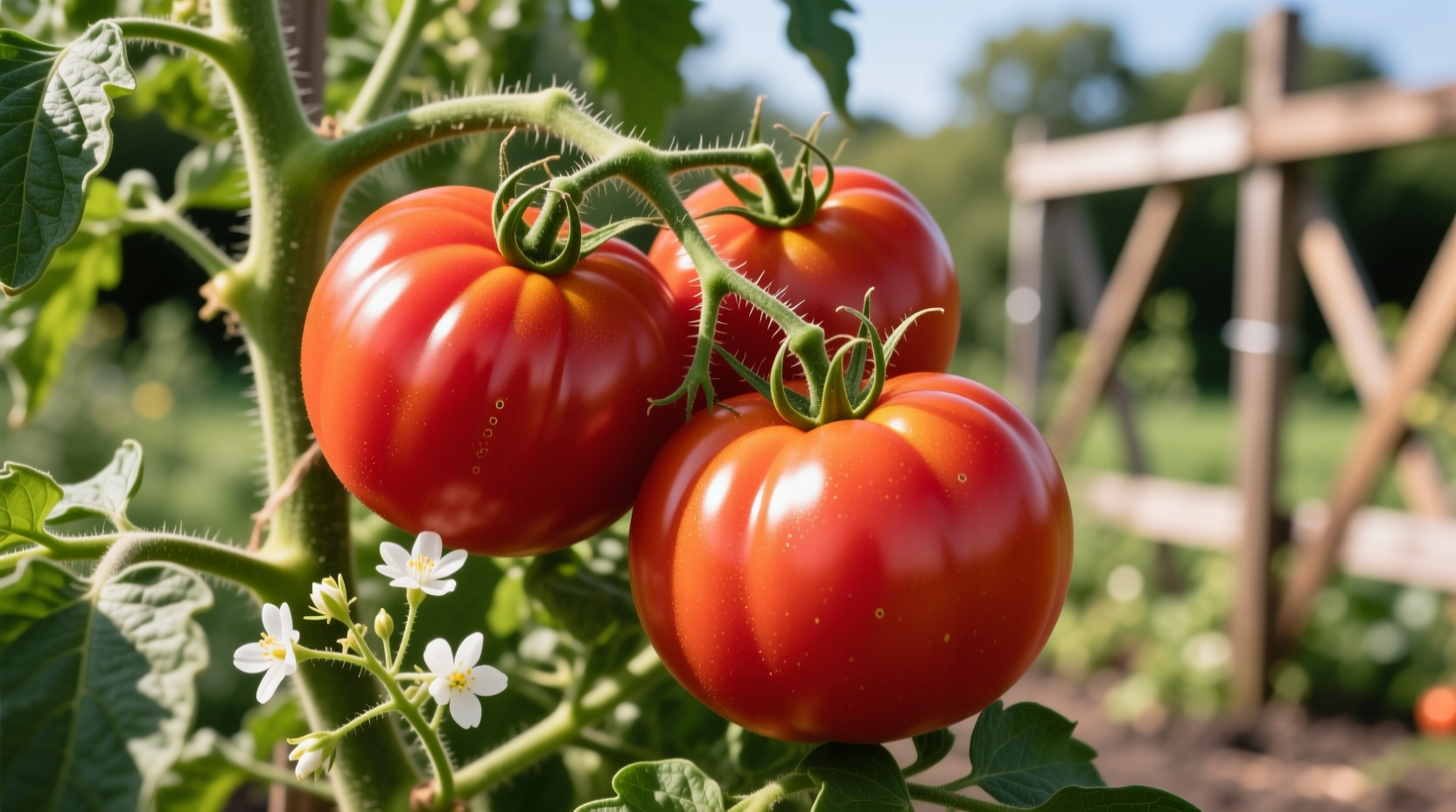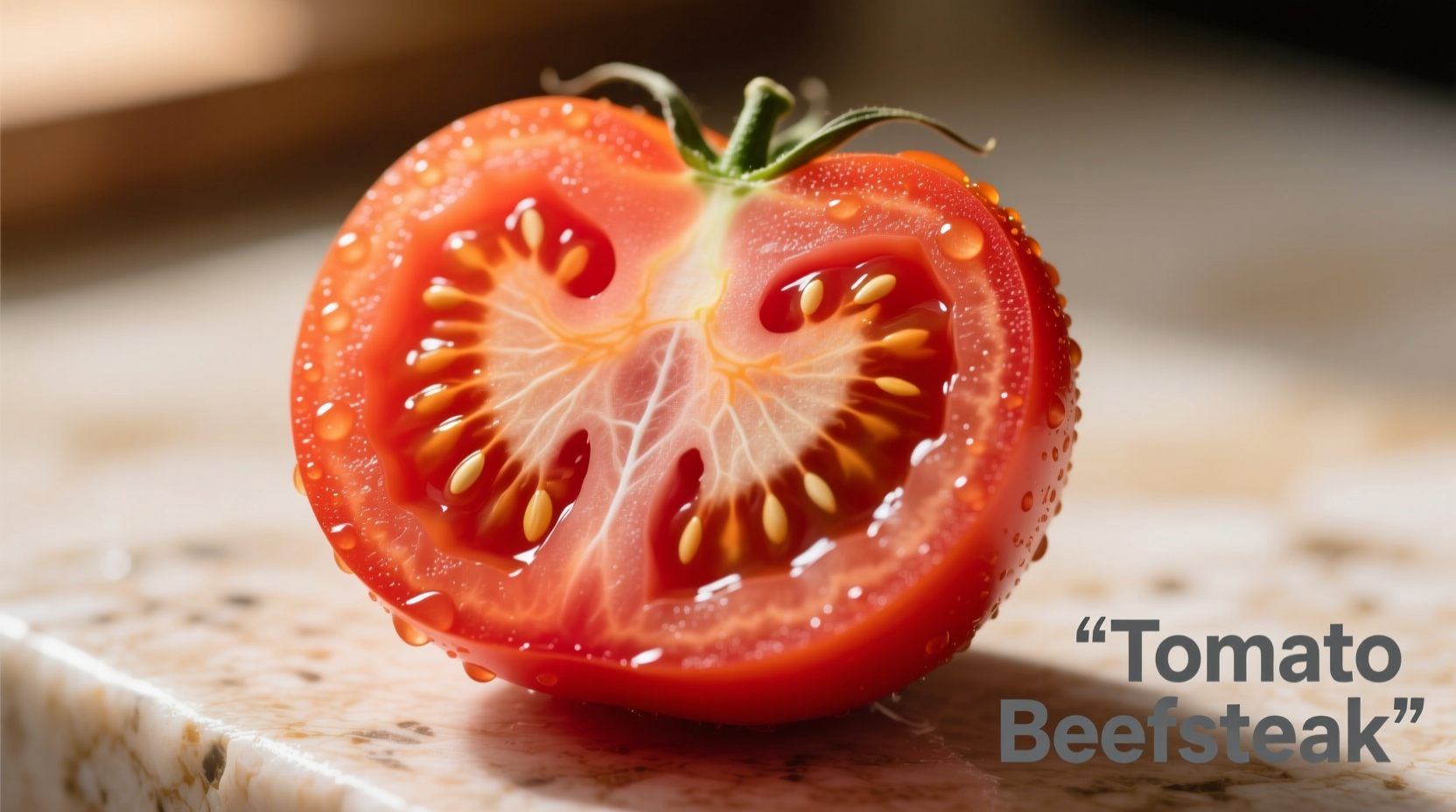When you're searching for the perfect tomato to elevate your summer sandwiches or create show-stopping caprese salads, understanding beefsteak tomatoes gives you a significant advantage in the kitchen. These impressive fruits deliver unmatched versatility that transforms ordinary meals into extraordinary culinary experiences.
Why Beefsteak Tomatoes Stand Out From Other Varieties
Unlike smaller tomato varieties that can become watery or collapse under pressure, beefsteak tomatoes maintain their structure while delivering rich, complex flavor. Their substantial size—often reaching 4-6 inches in diameter—provides generous slices perfect for layering on burgers or creating impressive tomato sandwiches. The dense flesh contains fewer seed cavities than standard round tomatoes, resulting in more edible fruit per slice and less mess when preparing dishes.
| Tomato Variety | Average Weight | Seed Count | Best Culinary Uses |
|---|---|---|---|
| Beefsteak | 12-24 oz | Low | Slicing, grilling, sandwiches |
| Roma | 2-4 oz | Medium | Sauces, canning, paste |
| Cherry | 0.5-1 oz | High | Salads, snacking, roasting |
| Heirloom | 8-16 oz | Variable | Fresh eating, salads |
The Evolution of Beefsteak Tomatoes: From Curiosity to Kitchen Staple
Beefsteak tomatoes emerged in the early 20th century as gardeners selectively bred larger fruit varieties. The first documented beefsteak variety, 'Abe Lincoln,' appeared around 1920, but it was the development of 'Mortgage Lifter' during the Great Depression that truly popularized this category. Created by M.C. Byles in West Virginia, this variety reportedly earned him enough money from seed sales to pay off his mortgage—hence the name.
Throughout the 1940s and 1950s, commercial growers began developing hybrid beefsteak varieties with improved disease resistance while maintaining size and flavor. Modern breeding has expanded the color spectrum beyond traditional red to include pink, yellow, orange, and even purple varieties, each offering unique flavor profiles while maintaining the characteristic meaty texture.
When Beefsteak Tomatoes Shine (And When to Choose Alternatives)
Beefsteak tomatoes excel in applications where structural integrity matters most. Their dense flesh makes them perfect for:
- Creating substantial tomato sandwiches with minimal sogginess
- Grilling without falling apart on the barbecue
- Layering in burgers where you want distinct tomato slices
- Preparing panzanella or other bread salads that require firm tomato pieces
However, they're less suitable for applications requiring concentrated tomato flavor or smooth texture. For sauces, soups, or canning, Roma or plum tomatoes provide better results due to their higher flesh-to-juice ratio and lower water content. Similarly, cherry tomatoes work better in salads where you want bursts of flavor rather than substantial slices.

Top Beefsteak Varieties for Your Garden or Grocery Store
When selecting beefsteak tomatoes, consider these popular varieties:
- 'Brandywine' - The classic heirloom with exceptional flavor, typically pink or red, weighing 1-2 pounds
- 'Big Beef' - A hybrid variety offering disease resistance with classic beefsteak characteristics
- 'Cherokee Purple' - Known for its dusky purple color and complex sweet-smoky flavor
- 'Mortgage Lifter' - The original giant with exceptional size and rich flavor
- 'German Johnson' - Similar to Brandywine but with slightly larger fruit and pink coloration
Gardeners should note that most beefsteak varieties require 75-90 days to reach maturity and benefit from sturdy caging or staking due to their substantial fruit size. When harvesting, look for tomatoes that have fully developed their characteristic color with slight softness when gently squeezed—avoid waiting until they become overly soft, which compromises their structural integrity.
Maximizing Flavor in Your Beefsteak Tomato Dishes
To get the most from your beefsteak tomatoes, follow these professional chef techniques:
- Room temperature storage - Never refrigerate tomatoes as cold temperatures destroy flavor compounds
- Horizontal slicing - Cut across the equator rather than stem-to-bottom for more uniform slices
- Salt timing - Add salt just before serving to prevent premature moisture release
- Layer protection - Place lettuce between bread and tomato to create a moisture barrier in sandwiches
For grilled applications, brush slices lightly with olive oil and sprinkle with coarse salt before placing on a hot grill. The dense flesh caramelizes beautifully while maintaining shape, creating impressive char marks without falling apart. In sandwiches, pair beefsteak tomatoes with complementary ingredients like fresh basil, high-quality mayonnaise, and artisan bread to showcase their flavor without overwhelming them.











 浙公网安备
33010002000092号
浙公网安备
33010002000092号 浙B2-20120091-4
浙B2-20120091-4